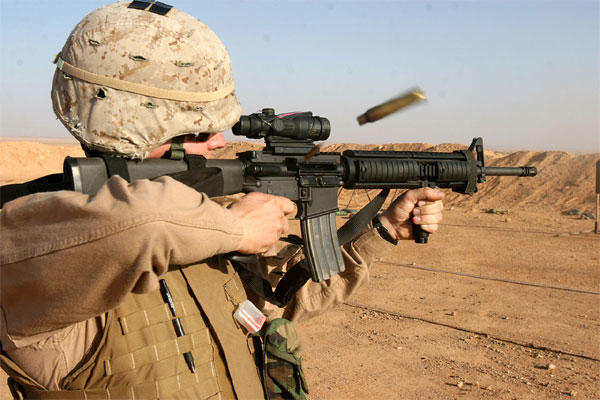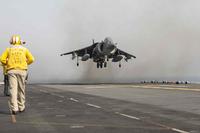U.S. lawmakers recently questioned Army and Marine Corps leaders on small-arms and why the two services buy completely different bullets for the M16A4 rifles and M4 carbines.
"You guys are using two different rounds, and you have procured several million rounds to date and you have used them in combat," Rep. Loretta Sanchez, D-Calif., said at a March 19 House Armed Services Committee hearing.
Sanchez, the ranking member of the Subcommittee on Tactical Air and Land Forces, wanted to know why the Marine Corps uses the M855 5.56mm round and the Army uses the M855A1.
The services met with the subcommittee to discuss Fiscal 2016 modernization efforts -- a touchy subject these days since the Pentagon is facing another round of mandatory budget cuts under sequestration in 2016.
"Maintaining two inventories of the same size combat ammunition is probably not the most efficient way to go," Sanchez said.
"I just think it looks bad. It makes us all look bad. It appears very wasteful from the outside to have the Marines and the Army not buying the same bullet."
But the Marine Corps and the Army's decision to use two separate types of 5.56mm ammo is not a simple oversight.
The Army adopted the M855A1 in 2010 after years of struggling to find a lead-free replacement for the Cold-War era M855.
In recent years, troops also criticized the M855, saying it often delivered ineffective results on enemy behind battlefield barriers such as car windshields.
The M855A1 features a steel penetrator on top of a solid copper slug, making it is more dependable than the current M855, Army officials have maintained. It delivers consistent performance at all distances and performed better than the current-issue 7.62mm round against hardened steel targets in testing. It penetrated 3/8s-inch-thick steel at ranges approaching 400 meters, tripling the performance of the M855, Army officials said.
The Corps had planned to field the Army's M855A1 until the program suffered a major setback in August 2009, when testing revealed that some of the bullets did not follow their trajectory or intended flight path.
The earlier design of the M855A1 featured a bismuth-tin slug which proved to be sensitive to heat, prompting Marine officials to stick with the M855 and also the Special Operations Science and Technology round developed by U.S. Special Operations Command instead.
Commonly known as SOST ammo, the bullet isn't environmentally friendly, but it offered the Corps a more effective bullet, Marine officials have said.
The latest version of the M855A1, which uses a copper slug, performed well in more than 500,000 round of testing, Army officials maintain.
The Marine Corps is planning to test the M855A1, according to Marine Brig. Gen. Joseph Shrader, commander of Marine Corps Systems Command.
"Right now, our current round is the M855, but we are conducting testing with the Army on the M855A1 round," he said. "That testing is going to begin in April and should go through July-August timeframe.
"What we are pursuing in a new round … are three things -- precision, lethality and reduced signature or muzzle suppression."
Once testing is completed, "we will have to analyze the data and make logical decisions out of it," Shrader said.
Sanchez also asked Army officials about complaints that the newer M855A1 is causing excessive wear on M4s over time.
"It has been suggested that the Army's round does damage to the weapon it is used in. Do you agree with that?" she asked.
Army Lt. Gen. Michael Williamson, military deputy to the Assistant Secretary of the Army for Acquisitions, Logistics and Technology, did not agree.
"I have no test data to support that it caused more jamming or damage to the weapon," he said. "We are confident that we have picked the correct round, and we continue to support that."
-- Matthew Cox can be reached at matthew.cox@military.com




























